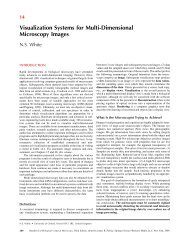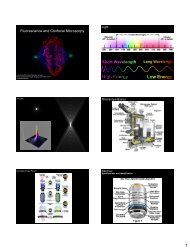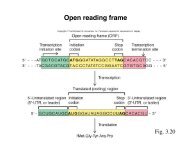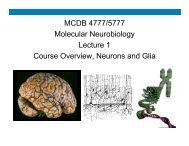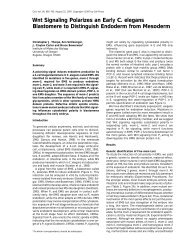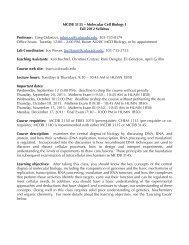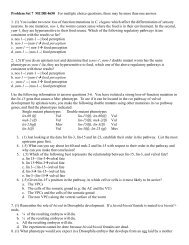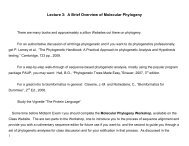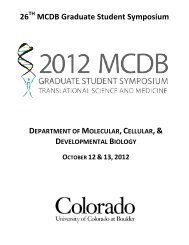Lecture 2: Describing Microbial Diversity: the ... - MCD Biology
Lecture 2: Describing Microbial Diversity: the ... - MCD Biology
Lecture 2: Describing Microbial Diversity: the ... - MCD Biology
You also want an ePaper? Increase the reach of your titles
YUMPU automatically turns print PDFs into web optimized ePapers that Google loves.
4<br />
understand <strong>the</strong> evolutionary process. But, you need a metric – some property that provides a quantitative<br />
measure of <strong>the</strong> extent of relatedness of different organisms.<br />
A. Note that phylogenetic relationships can be “predictive”, not only “descriptive”: We can predict (some)<br />
properties of organisms based on <strong>the</strong> properties of <strong>the</strong>ir relatives – <strong>the</strong> principle: representatives of a<br />
particular phylogenetic group are expected to have <strong>the</strong> properties that are common to <strong>the</strong> group.<br />
e.g. -- We know a lot about Escherichia coli, but relatively little about Chromatium vinosum:<br />
1) E. coli is a chemoheterotroph, whereas C. vinosum is a photoheterotroph. (What do <strong>the</strong>se terms<br />
mean?) Classical physiological treatment would have considered <strong>the</strong>se organisms wildly different. From<br />
gene-sequence comparisons we know <strong>the</strong>y are fairly close relatives (!-group of proteobacteria).<br />
2) Thus, even though one eats glucose and <strong>the</strong> o<strong>the</strong>r light, we can predict that <strong>the</strong> biochemical underpinnings<br />
are similar -- protein-syn<strong>the</strong>sizing machinery (antibiotic-sensitivity), DNA replication machinery, amino acid-<br />
syn<strong>the</strong>sizing machinery, nucleotide biosyn<strong>the</strong>sis, etc. Because of <strong>the</strong> close phylogenetic relationship, we<br />
expect to be able to swap many genes between <strong>the</strong>se two superficially disparate organisms.<br />
3) The predictive value of phylogeny is essential for interpreting environmental sequence surveys.





